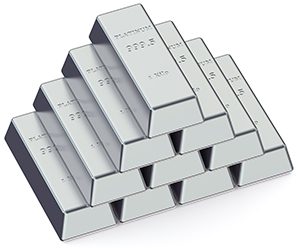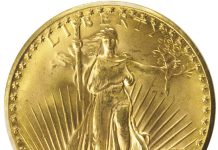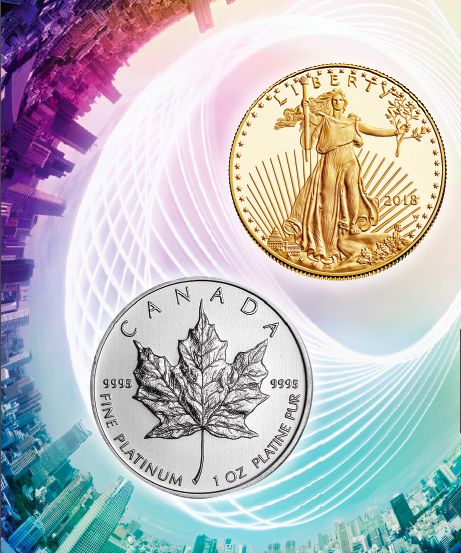
By James Passin
Some years back, Amazon deleted George Orwell’s legendary dystopian novel, 1984, from Kindle devices – an ironic action that revealed the unfettered raw power of the technology giants such as Amazon to censor and even delete our own literary history at will. I remember this well because I have a degree in philosophy, and 1984 was one of my favorite books to read and reread on Kindle. A literary work that I felt was permanent and mine to peruse at any moment simply vanished.
There is nothing like pulling a physical book from your real library and reading it – without the oversight of our self-created global security apparatus created through digital distribution monopolies and social media companies.
Careful Control of Collections
I have always loved collecting gold and silver coins, and owning precious metals, for the same reason. Collecting coins and storing them within your care, custody, and control allow the possibility of building wealth that is not beholden to a centralized financial architecture. Simply put, my coin collection is not stored on a Kindle or any other digital device, and it can’t be taken away from me without my knowledge by the swipe of any overzealous entity.
Cryptocurrency, securely stored on a hardware wallet, plays a similar role for me as gold and silver coins; Bitcoin is a liquid, infinitely transportable monetary asset built on pure mathematics and the presumption of human greed, not relying on the goodwill of any sovereign actor or trusted third party. Admittedly, my gold and silver coin collection are physical assets, but my Bitcoin is more easily transportable, as well as more practical for use in commerce and for payment purposes.
The unprecedented power grab by the tech giants, which have 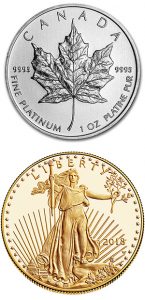 impressed their dominance onto almost all aspects of human communication and knowledge transmission, through the global dissemination of “free” applications such as social media, search engines, and email, is threatening human sovereignty through novel tools and strategies of surveillance and oppression that not even Orwell envisioned in 1984.
impressed their dominance onto almost all aspects of human communication and knowledge transmission, through the global dissemination of “free” applications such as social media, search engines, and email, is threatening human sovereignty through novel tools and strategies of surveillance and oppression that not even Orwell envisioned in 1984.
With its decentralized governance structure, and its immediate applicability to the dominant digital economy that has emerged over the last 20 years, cryptocurrency is now forming the underpinning of a decentralized world order that will allow revolutionary applications such as uncensorable data storage on peer-to-peer networks, directly attacking the tech distribution monopolies. As with gold and silver coins and other hard assets, cryptocurrency can play a fundamental role in protecting individual sovereignty and privacy.
Eying the Market Outlook
I will touch on my outlook for precious metals, rare coins, and cryptocurrency. I do not have a clear view on gold. I cannot envision gold seeing any significant price increases when the Fed is hiking interest rates and other major central banks are still pursuing quantitative easing. However, the gold price seems washed out, and there does not seem to be much risk from going long at current levels.
Certain participants in the fixed income market are murmuring that the Fed’s shrinking of its balance sheet is causing a shortage of dollars in the credit market, since banks now have to meet the stringent capital requirements of Basell III and Dodd-Frank. While it is possible that the price of gold could fall during a period of U.S. dollar scarcity, the end result could be another credit crisis emanating in a new round of quantitative easing, unleashing a new bull market in gold. In the near-term, looking out 12 months, I prefer crypto to gold. I will touch on the crypto market here.
I am holding in my hand a recently minted one-ounce Maple Leaf platinum coin. Platinum, a noble metal that is heavier than gold and highly resistant to corrosion, is used in numerous important applications including catalytic converters, cathodes, dentistry equipment, and jewelry. Aside from industrial and jewelry uses, platinum has played a monetary role, in the form of minted and circulated platinum coins, for more than 200 years. Platinum has been used as a symbol of wealth and power since ancient Egypt.
In 2013, President Obama disclosed that his team was considering issuing a platinum coin with a trillion-dollar face value to allow the United States Treasury to create money out of thin air and allow the White House to keep spending money without any approval of the budget from Congress. The plan was to mint one platinum coin with a “trillion-dollar” face value and then deposit it as an asset with the Federal Reserve Bank. Thankfully, this absurd, hyperinflationary scheme, which would rely on a tortured interpretation of a provision of an obscure act from 1998, was not executed; but it would have been amusing to see if the Secretary of the Treasury would have sent the coin to PCGS or NGC!
Profiling Platinum
Aside from one-ounce Maple Leaf platinum coins, which have modest premiums to melt value, I like 10-ounce platinum bullion bars with platinum at its current price level ($835 per ounce) as this is being written; they are denser then gold or silver bars, making it relatively easy to store a large value in a small area (for example, in a safety deposit box or other secure location). It is also easy to transport large values of wealth in the form of platinum bars.
To me, it doesn’t make a lot of sense for American Eagle platinum coins to be trading at such a significant premium to the spot price of platinum. Yes, the U.S. Mint charges its distributors a 4% premium. And, yes, I know that these coins have some collector demand and are in short supply. Nonetheless, I am avoiding American Eagle one-ounce platinum coins and, if I owned any, I would sell them and buy Maple Leaf platinum coins with the proceeds. There are other platinum coins, too, but I like the one-ounce
Maples because they are widely recognized as a mainstream coin. Just be careful that your coins are worthy of “good delivery.” Inspect them for signs of circulation and damage.
Most metals experts are bearish on platinum based on the widely forecast surplus of platinum supply (from mines and recycling) over demand, an imbalance generally forecasted to last until 2027. In the face of this surplus, there is no reason to get long platinum, as there is no obvious bullish driver of the price. At the same time, electric cars, a globally “hyped” story, have created so much speculative excitement about “battery metals,” that they have destroyed sentiment towards combustion engines and, therefore, one of the main drivers of platinum demand: catalytic converters. The negative sentiment towards platinum has expressed itself in the platinum futures markets, where reported short positions in platinum futures have recently increased to a record high level.
Platinum or Gold?
On the production side, the main producer of platinum is South Africa. Having been involved in South African mining, I have an admittedly jaundiced view of the ability of South African platinum producers to sustain current production levels. For 2019, it is estimated that 36% of South African platinum production will be uneconomic. The South African rand (“ZAR”) has been rebounding after Ramaphosa replaced Zuma as President of the Republic of South Africa; a higher currency tends to squeeze the operating margins of commodity exporters, possibly further punishing the balance sheets of platinum producers.
In 2021, China is implementing China NS VI HDD, a national policy for emission standards. This new policy will result in a quantum increase in platinum demand. Aside from China, global automotive demand is continuing to grow; the total number of cars sold worldwide has grown at an average annual rate of 3.9% over the last three years. As developing countries impose tighter emission controls, the demand for platinum group metals (“PGM”) will continue to increase.
Aside from a brief dip of the platinum/gold ratio below 1 in 2011-2012, platinum was always more valuable per ounce than gold over the last several decades. The peak in the platinum/gold ratio was 2.27. The platinum/gold ratio has collapsed to a multi-decade low of 0.69. Assuming some continued correlation between platinum and gold, platinum may be viewed as high-beta bet on the gold price. Platinum Rolex watches are still more expensive than platinum gold watches!
I believe that platinum will outperform palladium and gold in 2019 as shorts cover and the stronger-than-anticipated fundamentals of the platinum market become apparent. If my “secret palladium – platinum rotation” hypothesis plays out, then the platinum/palladium ratio may return to its historic peak. Over the long-term, platinum may turn into an “energy metal”/technology play if hydrogen fuel cells become a mainstream story.
Considering Cryptocurrency
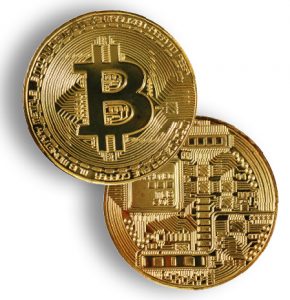 I continue to advocate that rare coin collectors and hard money investors should consider at least some tiny exposure to cryptocurrency in a hard asset portfolio. I have discussed cryptocurrency in previous COINage articles, and I do not want to reiterate the contents of previous “crypto vs. gold” arguments in this column. However, it would be a mistake for any rational hard money investor to ignore the energy and vast resources that is pouring into the “crypto” ecosystem.
I continue to advocate that rare coin collectors and hard money investors should consider at least some tiny exposure to cryptocurrency in a hard asset portfolio. I have discussed cryptocurrency in previous COINage articles, and I do not want to reiterate the contents of previous “crypto vs. gold” arguments in this column. However, it would be a mistake for any rational hard money investor to ignore the energy and vast resources that is pouring into the “crypto” ecosystem.
2019 will be the Year of the Security Token. Regulated security tokens, registered with relevant regulators, will soon emerge as a major low-cost source of capital for business and businesses around the world. Stakeholders in financial waterfalls will suddenly find that Security Token Offerings (“STO”) provide a quick path to liquidity, while investors will find that security tokens offer regulated financial exposure to previously inaccessible cash-flow streams. The rise of the security token “bubble” will necessarily create exponential increase in underlying demand for major cryptocurrencies.
Want to receive COINage magazine in your mailbox or inbox? Subscribe today!

